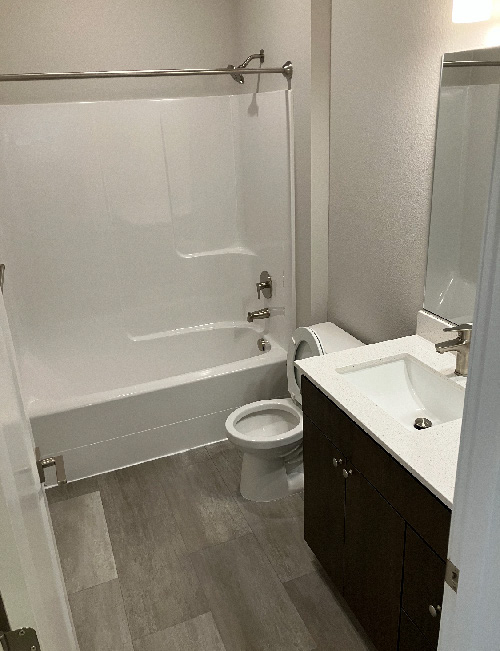Introduction
In today’s fast-paced corporate environment, the significance of maintaining a clean workplace cannot be overstated. The Connection Between Workplace Cleanliness and Employee Retention is a topic that has gained traction as businesses strive to create conducive work environments. Employees are not just looking for paychecks; they seek workplaces where they feel comfortable, valued, and healthy. Cleanliness plays a crucial role in that equation, influencing everything from productivity to mental health.
This article delves deep into how cleanliness can impact employee retention rates, exploring everything from hygiene standards to the role of professional cleaners in maintaining an inviting atmosphere.
The Connection Between Workplace Cleanliness and Employee Retention
When discussing employee retention, it’s vital to understand the psychological and physical aspects that cleanliness brings to the table. A clean workplace isn’t merely about aesthetics; it’s about creating an environment that fosters well-being.
Why Cleanliness Matters
- Physical Health: A tidy workspace can significantly reduce illness spread among employees. Germs thrive in cluttered environments. Psychological Well-being: Clutter can lead to stress and anxiety, while cleanliness often promotes calmness and focus. Professional Image: Clients and partners notice cleanliness. A dirty office can tarnish a company’s reputation.
Key Statistics on Cleanliness and Retention
- Did you know? According to studies, organizations with high cleanliness standards experience up to 30% lower turnover rates. A survey found that 70% of employees feel more productive in a clean environment.
The Role of Professional Cleaners in Maintaining Standards
Engaging professional cleaners ensures that Helpful hints your workplace meets hygiene standards consistently. They are trained in effective cleaning techniques, utilizing proper equipment and products to maintain health and safety.
Elements of a Clean Workplace
1. Physical Space Management
Maximizing Efficiency through Organization
An organized workspace helps employees find what they need quickly, which minimizes frustration and enhances productivity.
Decluttering Strategies
Encourage employees to keep their desks organized by implementing scheduled clean-up sessions or providing storage solutions.
2. Regular Cleaning Protocols
Daily vs. Weekly Cleaning Tasks
Establishing daily cleaning tasks (like wiping down surfaces) versus weekly (deep cleaning carpets) helps maintain an optimal workspace.
Importance of Deep Cleaning
Deep cleaning reduces allergens like dust mites and mold, which can adversely affect respiratory health.
3. Personal Hygiene Practices
Encouraging Good Hygiene Among Employees
Promote practices like hand washing or using sanitizers at workstations to minimize germ transmission.
Creating Hygiene-Friendly Workspaces
Equipping restrooms with essential supplies ensures employees have access to hygienic resources throughout their day.
How Cleanliness Influences Employee Morale
1. Enhancing Job Satisfaction through Clean Spaces
Employees who work in clean environments report higher job satisfaction levels. When people feel good about their workspaces, they become more engaged with their tasks.
2. Reducing Stress Levels via Organized Environments
A clutter-free workspace reduces distractions leading to improved focus on tasks at hand—this connection is vital for employee retention.
Cleanliness as Part of Corporate Culture
1. Establishing Company Values around Hygiene
As part of an organization’s culture, emphasizing cleanliness demonstrates care for employee well-being.

2. Encouraging Team Initiatives for Maintaining Cleanliness
Create teams or committees focused on workplace aesthetics—this involvement fosters teamwork while enhancing pride in one’s environment.
The Impact of Office Design on Cleanliness and Retention
1. Open vs Closed Office Spaces
Open Offices: While they promote collaboration, open spaces can become chaotic Professional Cleaner in Carlton without proper management.
Closed Offices: These may provide better control over cleanliness but could lead to isolation if not balanced properly.
2. Designing for Easy Maintenance
Selecting materials that are easy to clean can drastically improve long-term maintenance efforts without compromising aesthetic appeal.
Technological Solutions for Workplace Cleanliness
1. Cleaning Automation Tools
Investing in robotic vacuums or automated sanitization equipment ensures consistent upkeep with minimal manual effort required from staff.
2. Air Quality Monitoring Systems
Using technology that tracks air quality levels maintains a healthy atmosphere by detecting pollutants early on—clean air is essential for employee wellness!
Employee Feedback: The Importance of Listening
Encourage feedback regarding workplace cleanliness; this shows employees their opinions matter while helping identify areas needing improvement.
FAQs
1. Why does workplace cleanliness impact employee retention?
Workplace cleanliness directly affects employee morale, health, and productivity—all factors critical for retaining talent!
2. What role do professional cleaners play?
Professional cleaners ensure high hygiene standards are maintained consistently—a crucial aspect many businesses overlook!
3. How often should workplaces be cleaned?
It varies! Daily surface cleaning combined with weekly deep cleans generally works best for most settings—customize based on your office dynamics!
4. Can a dirty office affect client perceptions?
Absolutely! First impressions matter; clients may perceive dirtiness as unprofessionalism or lack of attention—clean offices foster confidence!
5. What should companies do if they can't afford professional cleaners?
Implement regular schedules where employees take turns maintaining cleanliness; even small efforts contribute positively toward overall conditions!
6. How does clutter affect productivity?
Clutter distracts individuals from focusing—leading them astray from tasks at hand! Keeping areas tidy promotes streamlined workflows!
Conclusion
In conclusion, the connection between workplace cleanliness and employee retention is profound yet often underestimated by many organizations today. By prioritizing hygiene through effective strategies—embracing not only regular cleaning protocols but also enlisting professional cleaners—you'll discover happier employees who stick around longer than expected! It's all about creating an environment where everyone feels valued—and nothing speaks louder than a sparkling clean office space!
So why wait? Start investing in your workplace's cleanliness today—it could be the key ingredient you've been missing all along!